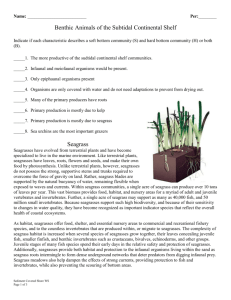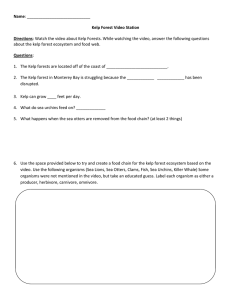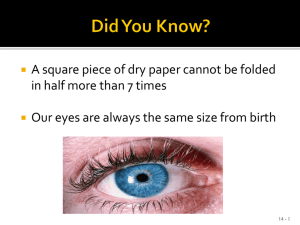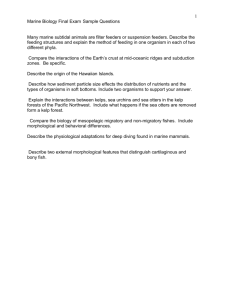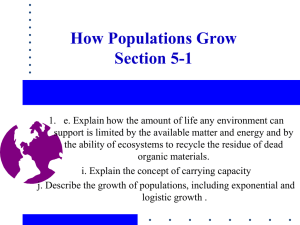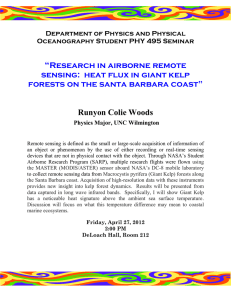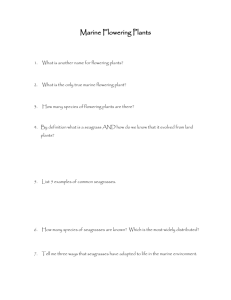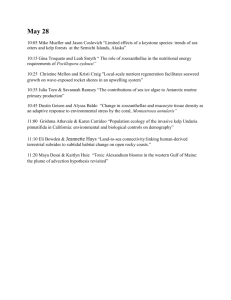WS 4.4 – The Continental Shelf
advertisement
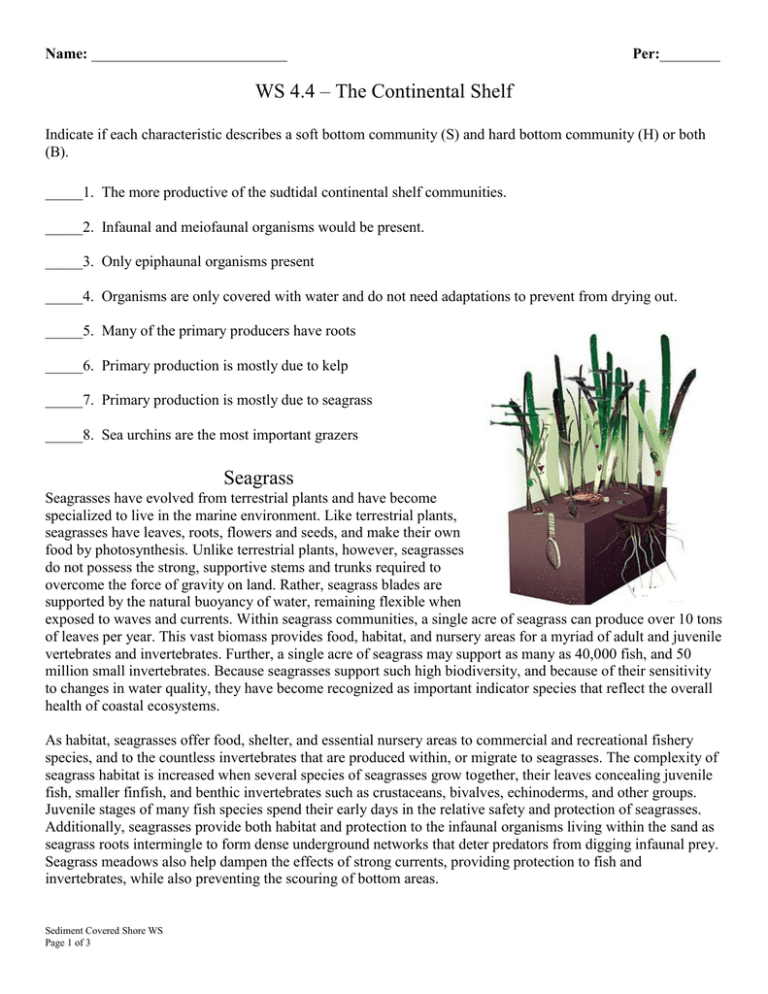
Name: __________________________ Per:________ WS 4.4 – The Continental Shelf Indicate if each characteristic describes a soft bottom community (S) and hard bottom community (H) or both (B). _____1. The more productive of the sudtidal continental shelf communities. _____2. Infaunal and meiofaunal organisms would be present. _____3. Only epiphaunal organisms present _____4. Organisms are only covered with water and do not need adaptations to prevent from drying out. _____5. Many of the primary producers have roots _____6. Primary production is mostly due to kelp _____7. Primary production is mostly due to seagrass _____8. Sea urchins are the most important grazers Seagrass Seagrasses have evolved from terrestrial plants and have become specialized to live in the marine environment. Like terrestrial plants, seagrasses have leaves, roots, flowers and seeds, and make their own food by photosynthesis. Unlike terrestrial plants, however, seagrasses do not possess the strong, supportive stems and trunks required to overcome the force of gravity on land. Rather, seagrass blades are supported by the natural buoyancy of water, remaining flexible when exposed to waves and currents. Within seagrass communities, a single acre of seagrass can produce over 10 tons of leaves per year. This vast biomass provides food, habitat, and nursery areas for a myriad of adult and juvenile vertebrates and invertebrates. Further, a single acre of seagrass may support as many as 40,000 fish, and 50 million small invertebrates. Because seagrasses support such high biodiversity, and because of their sensitivity to changes in water quality, they have become recognized as important indicator species that reflect the overall health of coastal ecosystems. As habitat, seagrasses offer food, shelter, and essential nursery areas to commercial and recreational fishery species, and to the countless invertebrates that are produced within, or migrate to seagrasses. The complexity of seagrass habitat is increased when several species of seagrasses grow together, their leaves concealing juvenile fish, smaller finfish, and benthic invertebrates such as crustaceans, bivalves, echinoderms, and other groups. Juvenile stages of many fish species spend their early days in the relative safety and protection of seagrasses. Additionally, seagrasses provide both habitat and protection to the infaunal organisms living within the sand as seagrass roots intermingle to form dense underground networks that deter predators from digging infaunal prey. Seagrass meadows also help dampen the effects of strong currents, providing protection to fish and invertebrates, while also preventing the scouring of bottom areas. Sediment Covered Shore WS Page 1 of 3 Finally, seagrasses provide attachment sites to small macroalgae and organisms such as sponges. Sea turtles, especially green sea turtles, are one of the very few animals to eat sea grass. Like normal lawn grass, sea grass needs to be constantly cut short to be healthy and help it grow across the sea floor rather than just getting longer grass blades. Sea turtles and manatees act as grazing animals that cut the grass short and help maintain the health of the sea grass beds. Over the past decades, there has been a decline in sea grass beds. This decline may be linked to the lower numbers of sea turtles. Questions: 1. Why don’t the seagrasses need strong supportive stems like the plants on land? 2. Do seagrasses live in a soft bottom community or a hard body community? What adaptations do seagrasses have to allow them to live in this community? 3. What are infaunal organisms? How do seagrasses protect infaunal organisms? 4. Besides seagrasses, what other organisms can be found in a soft bottom community of the subtidal continental shelf? Kelp forests, Sea Urchins, and Sea Otters Kelp forests occur in cold, nutrient-rich water and are among the most beautiful and biologically productive habitats on earth. They are found throughout the world in shallow open coastal waters. A dependence upon light for photosynthesis restricts them to clear shallow water and they are rarely much deeper than 15-40m. The kelps have in common a capacity for some of the most remarkable growth rates in the plant kingdom. In southern California, the kelp can grow 30 cm per day. There ability to spread so quickly in these areas is due to the lack of other "rooting" benthic organism in the areas. Since the ground in kelp forests is mostly rocky, no rooting organism can fully establish itself. Kelp like all algae has a holdfast which clings to the surface of the rock eliminating the need to root in it. From there the high growth rate of the organism takes over quickly spreading its large leaves and casting permanent darkness on any other algae that grows below them. Sea urchins live in the benthic zone of the ocean and are voracious herbivores. Urchins will spend most of their time living and foraging around the same few square feet. Because of their tendency to feed mainly on the base of the kelp, they tend to detach the whole plant from the substrate by eating through the stipe so that it will float away. An over abundance of urchins can lead to heavy grazing that results in barren areas that are free of kelp. These empty spots are aptly referred to as "urchin barrens". Sediment Covered Shore WS Page 2 of 3 The main predator of the urchins is the sea otter. Sea otters are marine mammals that live in a broad range from Alaska to Northern California. Because of their feeding habits, sea otters act as a keystone species in the kelp forest. Keystone species are features of an ecosystem that are essential in maintaining its balance. With sea urchins feeding on the kelp in a way that causes the plants to be completely lost, the control of their population becomes essential in maintaining the physical structure of the kelp forest. As a keystone species, when sea otters become scarce, the usually thriving kelp forest can shift to the barren condition from over grazing by the urchins. This has been a major concern in areas where, historically, sea otters were hunted for their fur. By 1911, in California, the sea otter populations were reduced from nearly 16,000 down to almost extinct. With such a drastic decline in sea otters, the kelp forests were shifted to urchin barrens and were not able to effectively recover until the urchin populations were reduced. Federal protection from the Marine Mammal Protection Act of 1972 imposed strict rules against the harvesting of sea otters. As the sea otter populations showed signs of recovery through the 1980's and 1990's, the urchin populations were able to be naturally balanced so as to again encourage the growth of kelp and the return of the lush kelp forest. Questions: 5. Does the kelp live in a soft bottom community or a hard bottom community? How do you know? 6. Explain why seagrasses would be unable to grow and survive in the same habitat in which kelp is growing? 7. How is the holdfast of algae different than the roots of plants? 8. Why is it important for survival that the kelp grows fast? 9. What are “urchin barrens?” 10. Explain why the kelp population decreased when the sea otter population decreased? Sediment Covered Shore WS Page 3 of 3
